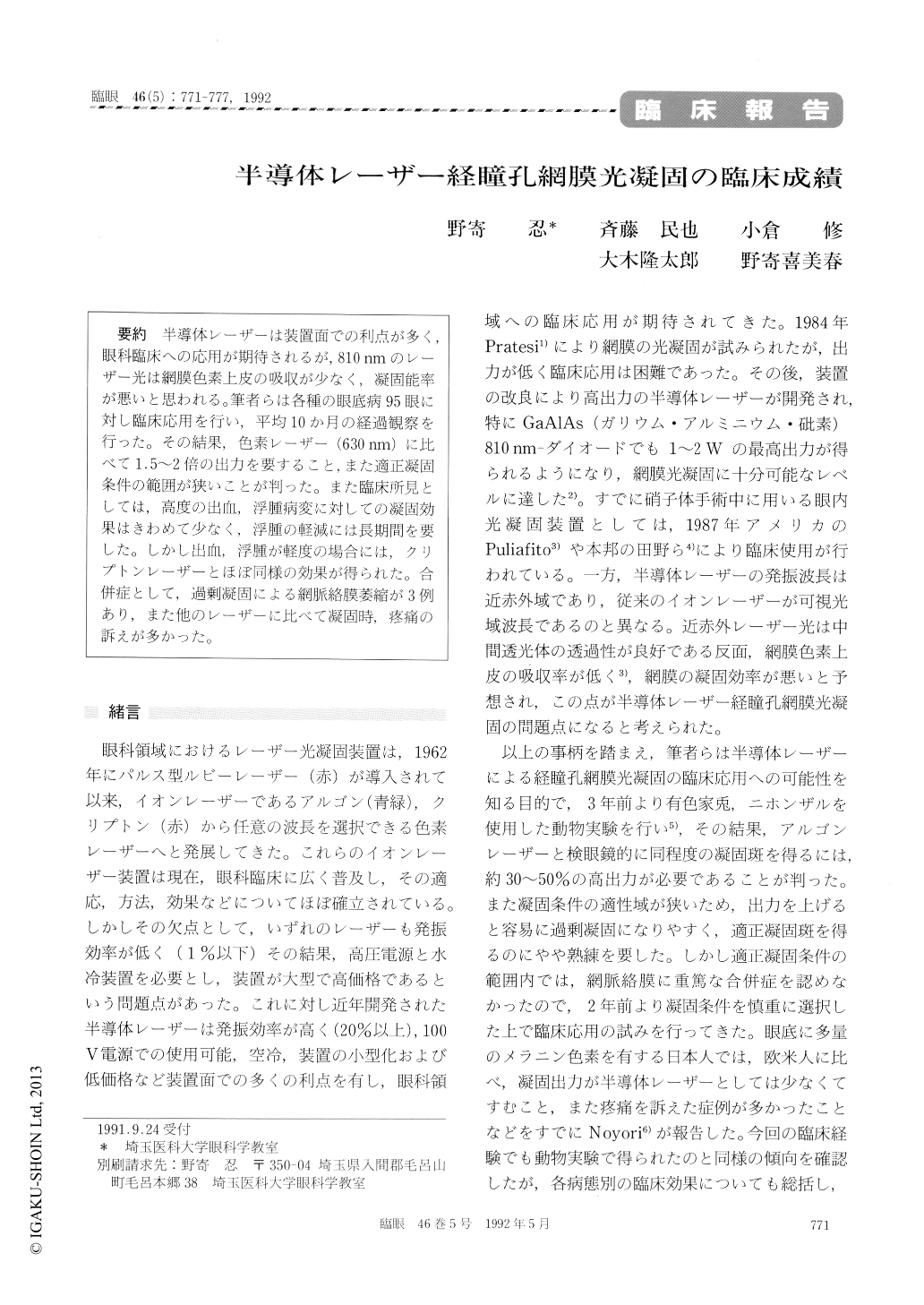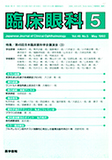Japanese
English
- 有料閲覧
- Abstract 文献概要
- 1ページ目 Look Inside
半導体レーザーは装置面での利点が多く,眼科臨床への応用が期待されるが,810nmのレーザー光は網膜色素上皮の吸収が少なく,凝固能率が悪いと思われる。筆者らは各種の眼底病95眼に対し臨床応用を行い,平均10か月の経過観察を行った。その結果,色素レーザー(630nm)に比べて1.5〜2倍の出力を要すること,また適正凝固条件の範囲が狭いことが判った。また臨床所見としては,高度の出血,浮腫病変に対しての凝固効果はきわめて少なく,浮腫の軽減には長期問を要した。しかし出血,浮腫が軽度の場合には,クリプトンレーザーとほぼ同様の効果が得られた。合併症として,過剰凝固による網脈絡膜萎縮が3例あり,また他のレーザーに比べて凝固時,疼痛の訴えが多かった。
We treated 95 eyes with various retinal diseases with transpupillary diode laser photocoagulation at 810nm. The follow-up period averaged 10 months. With the diode laser, it was necessary to apply 1.5 to 2 times as much energy as dye laser at 630nm to produce similar lesions. We also observed that the optimum therapeutic range was far narrower than conventional lasers at lower wavelengths. Diode laser induced minimum beneficial effect for mas-sive retinal hemorrhage or edema. Whenever effec-tive, it took longer to induce resorption of retinal edema than with conventional lasers. At an overall evaluation, clinical effects of diode laser photo-coagulation were similar to red krypton laser. There were 3 cases of choroidal atrophy manifest-ing minor complication after diode laser applica-tion. Complaints of ocular pain during diode laser photocoagulation were more frequent than with other lasers.

Copyright © 1992, Igaku-Shoin Ltd. All rights reserved.


